They don’t tell you at career day that working on an oil tanker can mean dodging bullets and barricading yourself in a steel bunker mid-ocean. Yet for today’s seafarers, this isn’t a tale from a dusty history book—it’s a present reality. Just last year, in a cramped Singapore apartment, Captain Rafiq still flinched at the sound of heavy footsteps outside his door—a lasting echo of the days he spent locked in the dark with pirates banging on the citadel. Maritime piracy has re-emerged, not as a relic of legend, but as a modern security and humanitarian crisis threatening lives, global trade, and our shared sense of safety on the seas. This post dives headfirst into the resurgence of piracy, its modern mutations, and the hidden struggles of those at the helm.
Maritime Piracy: A Medieval Menace in a Modern Disguise
When most people think of piracy, images of swashbuckling adventurers and old wooden ships come to mind. Yet, the reality is far more urgent and complex. Maritime piracy is not just a relic of history or the stuff of adventure movies—it's a very real, 21st-century security threat. In recent years, the world has witnessed a troubling revival in piracy, with modern pirates employing tactics as sophisticated as any high-tech heist in a blockbuster film. These modern piracy facts reveal a global piracy rise that continues to threaten international trade and the safety of seafarers.
Historically, piracy has shadowed maritime trade for millennia. From the ruthless Vikings to the notorious privateers of the 17th and 18th centuries, pirates have always exploited the vulnerabilities of the seas. With the rise of powerful navies in the 19th century, piracy declined, but it never truly disappeared. Instead, it lingered in regions like the South China Sea, waiting for the right conditions to resurface.
The late 20th and early 21st centuries brought those conditions. Political instability, economic downturns, and changes in maritime technology all played a role. Research shows that post-Cold War reductions in naval patrols, the growth of massive container vessels, and reliance on vulnerable chokepoints such as the Malacca Strait have made piracy simpler and more lucrative. The result? A notable resurgence of piracy since the early 2000s, particularly in under-resourced coastal states where law enforcement is weak.
Modern pirates are not the ragtag bandits of old. They use GPS, radar, encrypted communications, and even insider information from corrupt officials. These tools allow them to play a deadly game of cat-and-mouse with international navies and shipping companies. Attacks can range from quick, opportunistic robberies to highly organized operations involving elaborate planning, logistics, and transnational funding channels. The sophistication of these operations marks a clear shift in maritime piracy trends.
Piracy adapts, reinventing itself with every disruption in world order. – Rear Admiral Jean-Michel Martinez
Political instability remains a major driver of the global piracy rise. For example, the collapse of Somali governance in the late 2000s created a breeding ground for ransom-driven piracy, while the Gulf of Guinea has become infamous for violent kidnappings and oil theft. Southeast Asia, especially the Malacca Strait, continues to report high rates of armed robbery against ships, highlighting the persistent vulnerabilities in global shipping routes. These modern piracy facts underscore the need for constant vigilance and adaptation.
As pirates gain access to advanced technology, the scope and impact of attacks have changed. Large container vessels and complex supply chains add new vulnerabilities, making it easier for pirates to target high-value cargo and disrupt global commerce. The human cost is significant—seafarers face violence, captivity, and lasting trauma, while their families endure anxiety and uncertainty. The psychological and economic effects ripple far beyond the immediate victims.
| Trend/Factor | Impact on Modern Piracy |
|---|---|
| Advanced Pirate Tactics (radar, GPS, encrypted comms) | Enabled more precise, coordinated, and successful attacks since early 2000s |
| Political Instability | Major factor in resurgence, especially in regions like Somalia and the Gulf of Guinea |
| Container Vessel Size & Complex Supply Chains | Increased vulnerability and attractiveness of targets for pirates |
Ultimately, the evolution of maritime piracy in the 21st century is a story of adaptation and resilience. The threat continues to evolve, demanding equally dynamic responses from the global community.
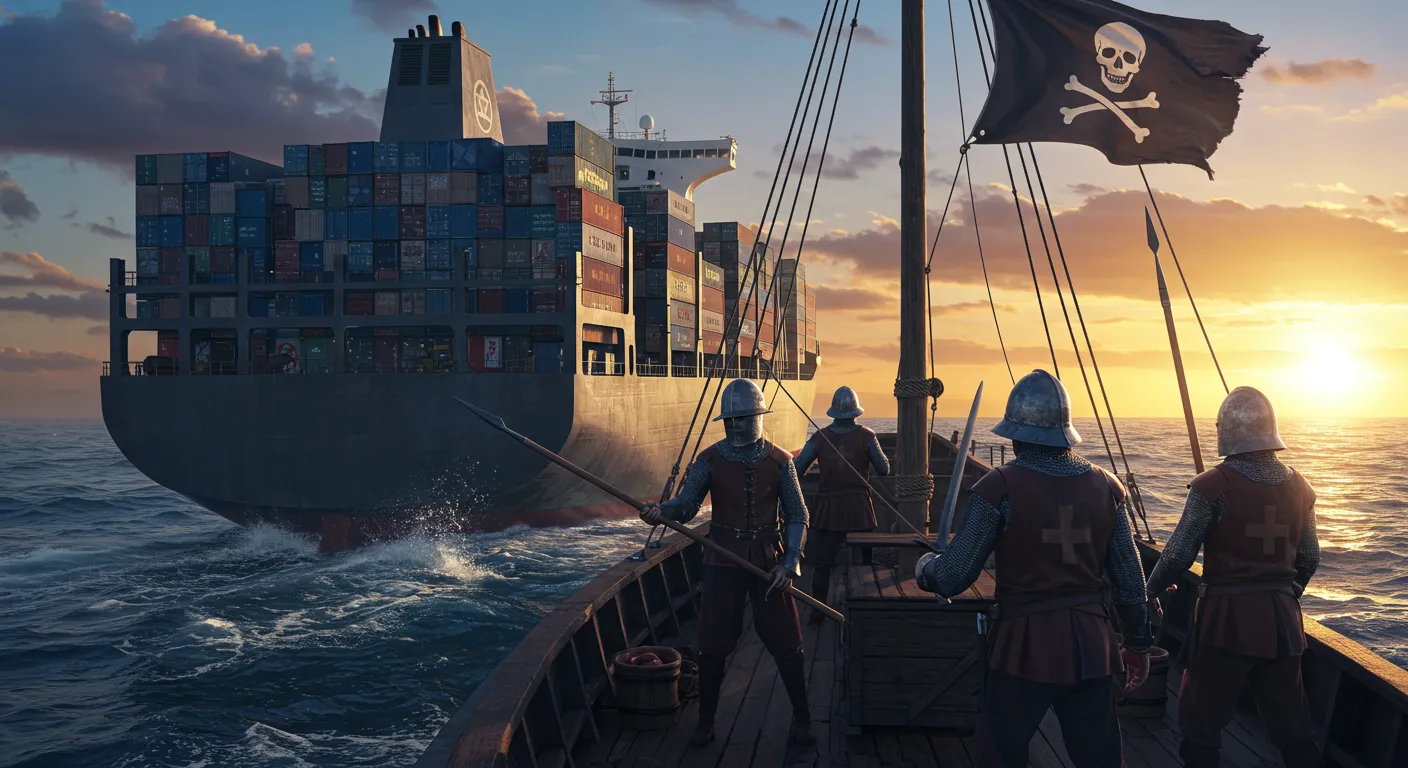
Mapping the Modern Peril: Where Piracy Hits Hardest (with Data Table)
In the 21st century, maritime piracy has re-emerged as a serious global threat, far removed from the romanticized legends of the past. Today’s piracy hotspots—such as the Gulf of Guinea, Somali coast, Southeast Asia (especially the Singapore Straits), and parts of Latin America—are defined by their own unique challenges and evolving tactics. Understanding where piracy strikes hardest is crucial for shipping companies, policymakers, and the seafarers who face these dangers firsthand.
Each region’s piracy problem is distinct. Off Somalia, piracy has historically centered on hijackings and ransom demands, often targeting large merchant vessels. In contrast, the Gulf of Guinea has become notorious for violent attacks focused on oil theft and the kidnapping of crew members for ransom. Southeast Asia, particularly the Singapore Straits, is plagued by quick, armed robberies—often at anchor or in narrow shipping lanes. Even Latin America has seen a rise in attacks, especially off the coasts of Venezuela and Brazil, where local criminal groups exploit economic instability.
Recent piracy statistics highlight how these threats are shifting. The Singapore Straits, for example, have seen a dramatic surge: 27 piracy incidents were reported in early 2025, compared to just 7 in the same period of 2024. That’s a staggering 285% increase, making it one of the world’s most concerning piracy hotspots for 2025. Globally, 45 maritime piracy incidents were recorded in the first quarter of 2025—up 35% year-on-year—according to the latest data from the International Maritime Bureau.
Behind these numbers are real human stories. In Q1 2025 alone, 37 seafarers were taken hostage and 13 kidnapped during piracy incidents. The threat is not just about theft; it’s about lives put at risk. Notably, firearms were present in 14 of these incidents, underscoring the growing danger faced by crews. As Dr. Lina Reyes puts it:
Piracy doesn’t just shift locations; it changes its stripes.
Despite these alarming spikes in certain regions, broader trends show that 2024 saw the lowest number of global piracy incidents since 1994. This suggests that while piracy is not growing everywhere, it is becoming more concentrated and unpredictable. Research shows that pirates are adapting their methods, exploiting security gaps, and responding to local economic and political conditions. For instance, West African pirates often target petroleum cargo and crew, while Southeast Asian pirates favor fast, opportunistic robberies.
The International Maritime Bureau and regional reporting centers continue to track these evolving patterns, providing vital data for risk assessment and response. As piracy hotspots shift and new threats emerge, the need for regional strategies and international cooperation remains clear.
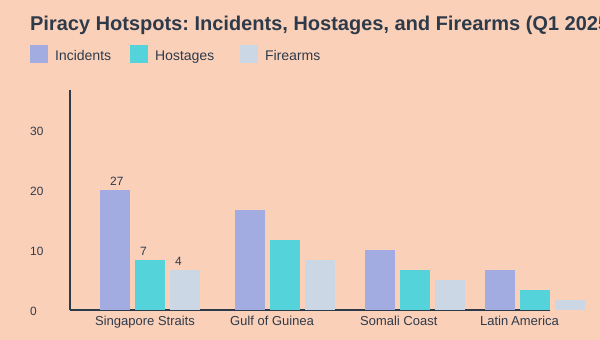
Inside the Ship: The Human Toll of Modern Piracy
Modern maritime piracy is more than a threat to global trade—it is a direct, personal danger to the men and women who keep the world’s shipping lanes moving. While statistics and headlines often focus on hijacked ships and lost cargo, the real story unfolds inside the ship, where seafarers face life-altering risks. The seafarer safety risks posed by piracy are not just about physical harm; they extend to deep psychological wounds and lasting impacts on families and careers.
Firsthand accounts from crew members reveal the true cost of hostage situations and violent attacks. Many describe nights spent in fortified “citadels,” listening to pirates attempt to break in, or the nerve-racking uncertainty of waiting for help. As Chief Engineer Alessandra Kolev put it:
The hardest part wasn’t the gun—it was not knowing when, or if, we’d go home.
These moments leave more than physical scars. Research shows that psychological impact piracy is profound. Survivors often struggle with post-traumatic stress disorder (PTSD), depression, and ongoing anxiety. In Q1 2025 alone, 37 crew members were taken hostage and 13 kidnapped globally, according to recent data. The ordeal does not end with release—many crew members find it difficult to recount or process their experiences, and some never fully recover.
The suffering extends far beyond the ship. Families of those affected by hostage and kidnapping endure prolonged terror and uncertainty, sometimes for months. The wait for news, the fear of the unknown, and the challenge of supporting loved ones through recovery create a ripple effect of trauma. Children, spouses, and parents are left to cope with the emotional fallout, often in silence.
Physical injuries are another harsh reality. Pirates are frequently armed—guns were reported in 14 piracy incidents in Q1 2025—and violence is common. Crew members may suffer untreated wounds, illnesses from poor conditions in captivity, or long-term health problems. These crew safety risks are compounded by inadequate medical care during and after the incident.
The professional consequences can be just as severe. Some survivors of piracy never return to sea, either due to trauma or because employers hesitate to rehire those with a history of captivity. Studies indicate that stigma and silence often surround these experiences, making recovery and reintegration even harder. Career setbacks, financial strain, and a sense of isolation mark the journeys of many affected seafarers.
Recovery is rarely straightforward. The effects of piracy can linger for years, touching not just individuals but entire communities. The piracy threat to crew is not only a matter of immediate danger but a long-term challenge that demands recognition and support. As modern piracy adapts and persists, so too must efforts to address its human cost—both inside the ship and beyond.
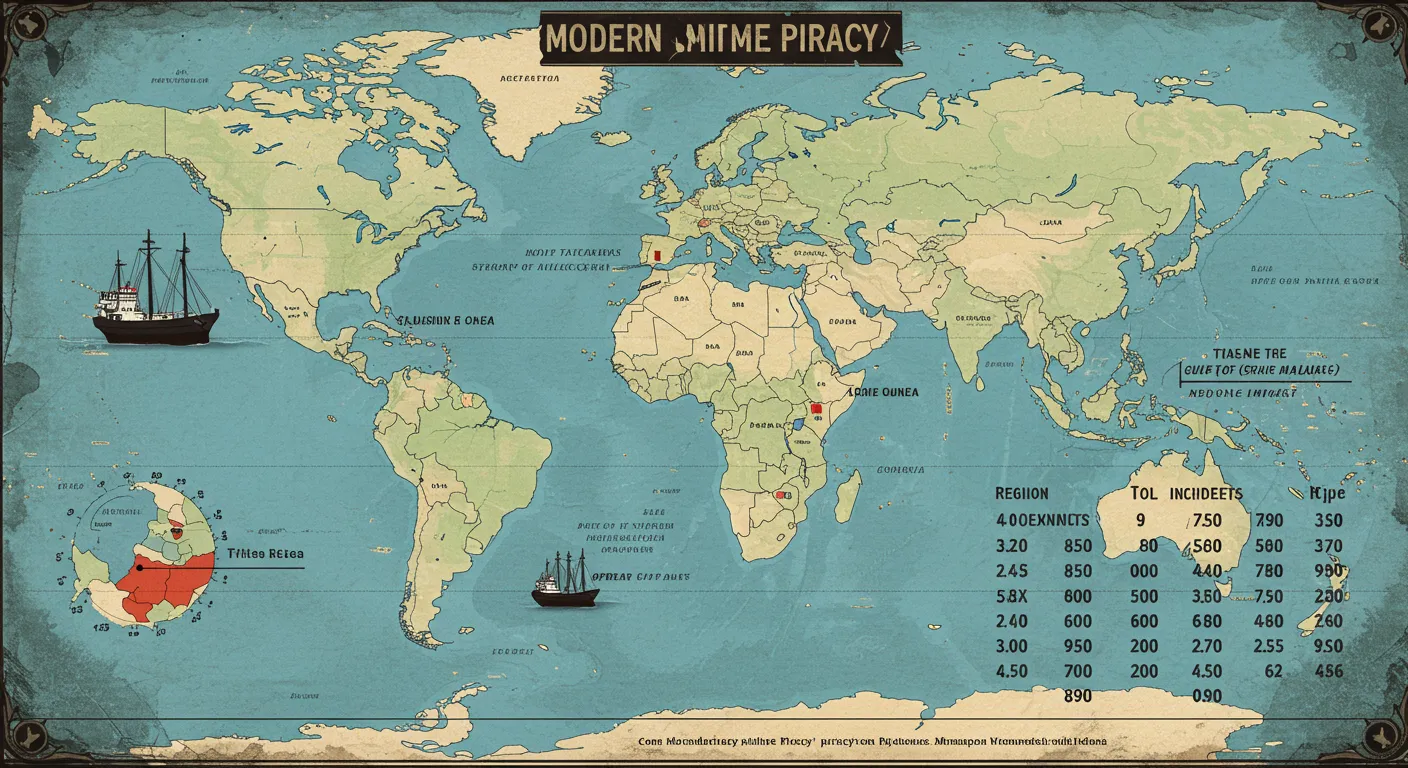
Pirate Playbooks: How Gangs Outsmart the System (with Graphic Chart)
Modern maritime piracy is no longer just a tale of swashbuckling adventurers. Today’s piracy incidents are marked by calculated tactics, advanced technology, and a level of organization that rivals legitimate enterprises. As piracy trends statistics reveal, these criminal networks have evolved rapidly, often outpacing traditional maritime security measures and posing a growing threat to global trade routes.
One of the most striking features of contemporary pirate operations is their use of small, high-speed skiffs launched from larger “mother ships.” These skiffs, often equipped with powerful outboard motors, allow pirates to approach merchant vessels quickly and quietly. Armed with automatic rifles—such as AK-47s—and sometimes even rocket-propelled grenades (RPGs), these gangs are prepared for violent confrontation. Research shows that attacks frequently target ships with low freeboard, making it easier to board, and are often timed for maximum vulnerability—at night or during bad weather when visibility and response times are reduced.
Successful piracy incident reports often highlight the importance of reconnaissance and insider information. Pirates sometimes rely on corrupt port officials or shipping insiders to identify high-value targets and optimal attack windows. This intelligence-driven approach is especially evident in regions like the Gulf of Guinea and Southeast Asia, where armed robbery cases have surged. In fact, the Singapore Straits saw a dramatic increase in piracy incidents in early 2025, with 27 incidents reported compared to just 7 the previous year.
Not all pirate operations are the same. Some are opportunistic, fly-by-night attacks—quick armed robberies that rely on surprise and speed. Others are highly organized, with clear command structures, funding chains, and logistical support both at sea and on land. These sophisticated networks are often behind the most high-profile hijackings and piracy ransom demands. For example, the notorious hijacking of the MV Sirius Star in 2008 involved a $100 million crude oil cargo and demonstrated the scale of financial motivation driving Somali piracy. More recently, a Chinese vessel hijacked off Somalia in 2025 resulted in a $10 million ransom demand, underscoring the continued economic impact of such crimes.
Technological adoption has become a hallmark of modern piracy. Pirates utilize GPS, radar, and encrypted communications to coordinate attacks and evade naval patrols. As vessel security measures improve—such as the use of citadels and armed guards—pirates adapt their playbooks, shifting tactics to exploit new vulnerabilities. This cat-and-mouse dynamic is reflected in piracy trends statistics, which show a rise in quick, armed robberies alongside high-value hijackings.
Financial motives vary by region. Somali pirates have historically focused on ship and crew ransoms, while pirates in the Gulf of Guinea often target oil cargo and kidnap crew for ransom. These patterns are shaped by local economic conditions and the opportunities presented by busy maritime trade routes.
Pirates are equal parts opportunist and entrepreneur. – Maritime security analyst Benjamin Cruz
Ultimately, the evolution of pirate operations highlights the need for dynamic, intelligence-led countermeasures. As piracy incident reports continue to emerge from global hotspots, understanding these playbooks is essential for protecting seafarers and safeguarding international commerce.
Resilience and Response: Human Stories Meet Global Strategies
Modern piracy is no longer just a tale from history books—it is a complex, evolving threat that demands both global coordination and a deep understanding of its human toll. As piracy and armed robbery surged in the 21st century, the international community responded with a mix of military, legal, and humanitarian strategies. Yet, the challenge remains: how can piracy prevention measures keep pace with ever-adapting criminals, and how do we ensure the welfare of those most at risk?
International Naval Operations: A Turning Point in Piracy Prevention Strategies
NATO’s Operation Ocean Shield and the EU’s Operation Atalanta have played starring roles in the Somali region’s rebound. These coordinated naval missions, often cited by the International Maritime Bureau, provided escorts, surveillance, and rapid response capabilities along key shipping routes. Research shows that such international cooperation has been critical in reducing Somali piracy, with incidents dropping dramatically during peak mission years. However, these operations are expensive, resource-intensive, and limited in scope—pirates often shift their focus to less-patrolled waters, as seen with the recent spike in attacks in the Singapore Straits and the Gulf of Guinea.
Best Management Practices: Industry-Led Piracy Prevention Measures
The shipping industry’s Best Management Practices (BMP) have become a cornerstone of maritime security. Updated in 2025 to address new threats, BMP guidelines recommend physical barriers like razor wire, reinforced citadels, and regular crew drills. These piracy prevention strategies, while effective in many cases, are not foolproof. Pirates continue to adapt, sometimes breaching even the most fortified defenses. For smaller shipping companies, implementing these measures can be logistically complex and costly.
Private Armed Security Personnel: Deterrence with Dilemmas
Deploying Private Armed Security Personnel (PASP) has proven to reduce ship hijacking risk, especially in high-threat zones. Vessels with armed teams are statistically less likely to be targeted. Yet, this approach introduces legal and ethical complications—questions of jurisdiction, use of force, and liability often remain unresolved. International courts and cooperation for prosecution are rare, making legal outcomes unpredictable.
Seafarer Welfare: The Human Imperative
Perhaps the most significant shift in recent years is the growing recognition of seafarer welfare. Shipping companies are increasingly offering mental health services, trauma counseling, and reintegration support for crew members affected by piracy and armed robbery. Supporting survivors is now seen as a vital part of effective prevention, with industry standards evolving to prioritize both immediate and long-term care.
Security is not just a vessel issue; it’s a human imperative. – Captain Nandini Gupta
Despite these advances, prevention remains fragile. Pirates track opportunity, not borders. When one region becomes too risky, attacks migrate elsewhere or take on new forms. As countermeasures evolve, so do the tactics of those who threaten global maritime security. The ongoing challenge is to balance robust piracy prevention strategies with the real-world needs of maritime security professionals and the seafarers whose lives are on the line.
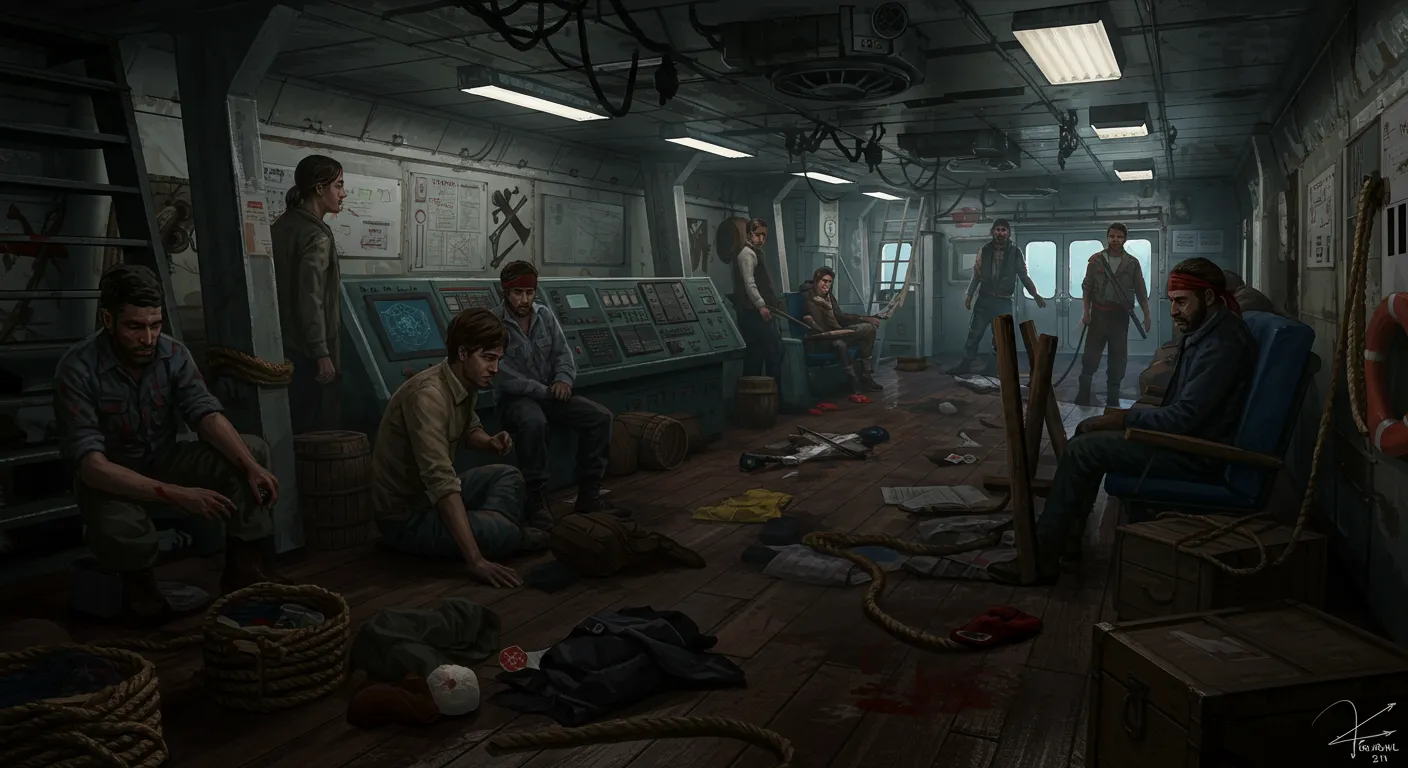
Beyond the Waves: Solving Piracy Ashore
Modern maritime piracy is not just a problem for ships at sea—it is deeply rooted in the challenges faced by coastal communities. While maritime security solutions such as naval patrols, vessel hardening, and armed security teams have reduced piracy incident reports in some areas, research shows that these piracy prevention measures alone are not enough for lasting results. The real battle against piracy must be fought ashore, where the root causes take hold.
Socio-economic instability, poverty, corruption, and weak governance are the main drivers that make piracy an appealing option for many. In regions like Nigeria’s Niger Delta and the Somali coast, a lack of legitimate economic opportunities pushes individuals toward maritime crime. Professor Suleiman Adamu put it simply:
Piracy starts where opportunity ends.
This insight is echoed by recent studies, which indicate that development programs and community-led anti-piracy development initiatives are linked to lower piracy rates. When people have access to education, stable jobs, and a sense of security, the incentive to risk their lives at sea for criminal gain drops sharply. In fact, pilot studies in both Nigeria and Somalia have shown that targeted investment in coastal community security—such as building schools, improving infrastructure, and supporting local businesses—can disrupt the piracy pipeline.
It’s not just about economics. Poor governance and corruption allow criminal networks to flourish, making law enforcement reform and regional cooperation essential parts of any sustainable solution. Maritime security solutions must be paired with efforts to strengthen legal systems, improve policing, and foster trust between communities and authorities. In some cases, local empowerment has proven especially effective: grassroots projects in the Niger Delta, for example, have provided young people with alternatives to piracy, from fishing cooperatives to small-scale tourism ventures.
Changing the incentives is key. As long as piracy remains more profitable than legitimate work, the cycle will continue. Real change means making it easier and more rewarding for people to build a future ashore. This could mean supporting industries like fishing, agriculture, or eco-tourism, all of which provide sustainable livelihoods and reduce the appeal of maritime crime.
Successful piracy prevention measures, then, require a partnership between land and sea. Naval power and high-tech defenses are important, but they must be matched by aid, education, and job creation onshore. As research shows, the most effective anti-piracy development strategies are those that address both immediate security needs and the long-term vulnerabilities of coastal populations.
Ultimately, tackling the onshore causes of piracy is not just about stopping attacks—it’s about transforming lives. By investing in coastal community security and supporting local empowerment, the international community can help break the cycle of maritime crime and create safer seas for everyone.
Unexpected Lessons: What Modern Piracy Teaches About Global Interconnectedness
Modern maritime piracy is far more than a distant threat confined to lawless waters. Its global trade impact is felt in ways that touch nearly every consumer’s life, often in ways that go unnoticed until a crisis hits. When a single vessel is hijacked in the Gulf of Guinea, the consequences can ripple outward—affecting oil prices, raising global shipping insurance rates, and even causing delays or shortages on supermarket shelves thousands of miles away. This is the reality of the global piracy rise: a problem that is both immediate for those at sea and quietly influential for those on land.
Research shows that piracy incident increases are not just statistics—they are signals of deeper vulnerabilities within the interconnected web of global commerce. In early 2025, for example, piracy surged by 35% compared to the previous year, with the Singapore Straits alone experiencing a dramatic spike. Each attack disrupts shipping schedules, leading to delays that can cascade through supply chains, impacting everything from manufacturing to retail. The cost of maritime insecurity is not just measured in ransom payments or stolen cargo, but in the cumulative economic drag on world markets and the daily lives of ordinary people.
Yet, perhaps the most overlooked lesson is the human cost. Crew hostage situations remain a grim reality, with dozens of seafarers kidnapped or held at gunpoint in recent months. These individuals are the invisible backbone of global trade, working long hours in dangerous conditions to keep goods moving. As logistics specialist Harriet Cheung puts it,
“When you put your goods on a ship, you put your trust in people you’ll never meet.”Their safety and well-being are not just a maritime issue—they are a matter of global responsibility.
The indirect effects of piracy extend beyond economics. They expose the hidden threads that bind distant shores to our daily routines, reminding us that the fuel in our cars, the food on our tables, and the products in our stores depend on safe, secure shipping lanes. Rapid response and international collaboration have proven effective in mitigating some of the worst outcomes, but these efforts must be matched by empathy and policy action. Consumer awareness and policy empathy are critical levers for change. When the public recognizes the true scope of maritime insecurity, there is greater pressure on governments and corporations to prioritize seafarer welfare and invest in long-term solutions.
Ultimately, the story of modern piracy is one of interconnectedness. It is a challenge that transcends borders and industries, demanding not just technological or military responses, but also a renewed sense of empathy for those who risk their lives at sea. Only by acknowledging the human dimension and embracing our shared stake in maritime security can we hope to build a more resilient and compassionate global trade system.
TL;DR: Modern maritime piracy isn’t just a problem for insurance adjusters and ship owners—it’s a trauma that shapes lives and global trade. The stakes in 2025 are higher and more human than ever, demanding both security solutions and empathy for those caught in the crossfire.
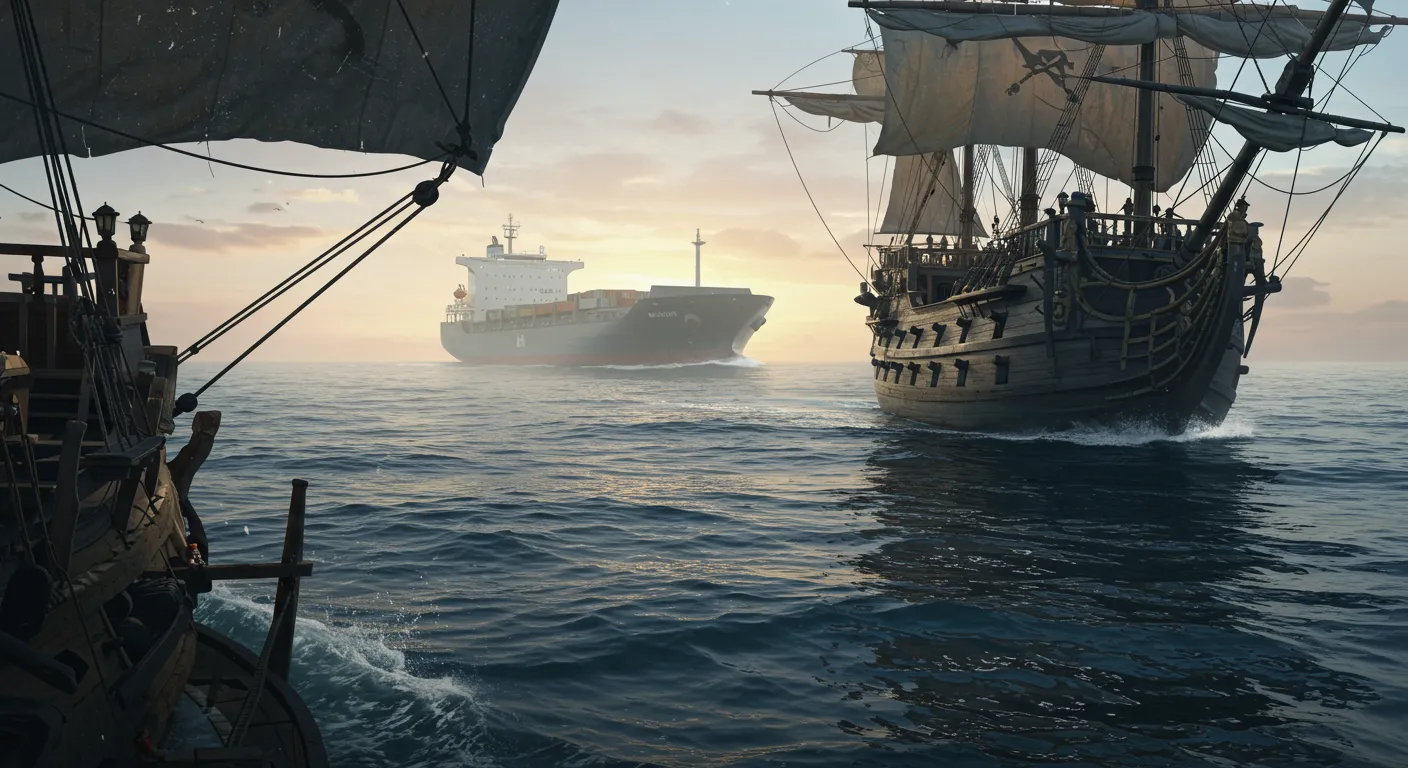
Comments
Post a Comment